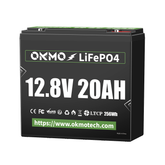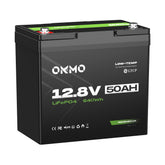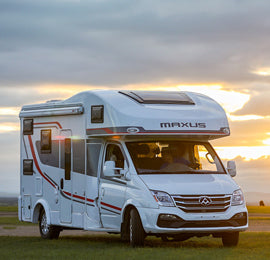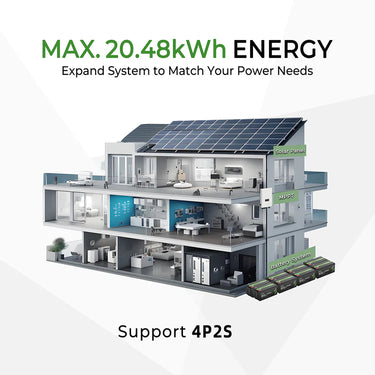How to Wire 24v Trolling Motor Battery ?

A trolling motor is an essential tool for fishing enthusiasts, and the battery is its power source. Properly wiring a 24V trolling motor battery not only ensures the device operates smoothly but also extends battery life and guarantees safety. This article will use the OKMO 24V LiFePO4 battery as an example to explain in detail how to wire it, with step-by-step instructions and images.
1. Basic Principles of a 24V Trolling Motor Battery
Trolling motors typically require a 24V power supply, which means either connecting two 12V batteries in series or using a single 24V battery. Series connection involves linking the positive terminal of one battery to the negative terminal of another, thereby combining their voltages. The OKMO 24V LiFePO4 battery is a high-performance lithium battery known for its lightweight design, long lifespan, and high energy density, making it an excellent choice for trolling motors.
2. Tools and Materials Needed for Wiring
Before starting the wiring process, ensure you have the following tools and materials ready:
-
Trolling motor power cables (usually with connectors)
-
Wrench or screwdriver
-
Insulation tape or heat shrink tubing
-
Multimeter (for voltage testing)
3. Detailed Wiring Steps
1. Inspect the Battery and Trolling Motor
First, ensure the OKMO 24V LiFePO4 battery is fully charged and check that the trolling motor’s power cables are intact. If using two 12V batteries, make sure they have the same voltage and capacity.
2. Connect the Batteries
If using the OKMO 24V LiFePO4 battery, no series connection is needed—proceed to the next step. If using two 12V batteries, connect them in series as follows:
-
Connect the positive terminal (+) of the first battery to the negative terminal (-) of the second battery.
-
The negative terminal (-) of the first battery and the positive terminal (+) of the second battery will serve as the system’s negative and positive terminals, respectively.
3. Connect the Trolling Motor
Connect the trolling motor’s positive power cable (usually red) to the battery’s positive terminal (+) and the negative cable (usually black) to the battery’s negative terminal (-). Ensure the connections are secure to avoid loosening.
4. Insulate the Connections
Use insulation tape or heat shrink tubing to cover the connection points to prevent short circuits or leakage.
5. Test the Voltage
Use a multimeter to check the battery’s output voltage, ensuring it is around 24V. If the voltage is abnormal, double-check the wiring.

4. Advantages of the OKMO 24V LiFePO4 Battery
The OKMO 24V LiFePO4 battery is a high-performance lithium battery with the following advantages:
-
Lightweight: Approximately 50% lighter than traditional lead-acid batteries, making it easy to carry.
-
Long Lifespan: Can be charged and discharged over 2000 times, with a service life of up to 10 years.
-
High Energy Density: Provides stable and efficient power output, suitable for extended use.
-
High Safety: LiFePO4 chemistry is stable, reducing the risk of overheating or explosion.
5. Wiring Diagram
Below is a wiring diagram for connecting the OKMO 24V LiFePO4 battery to the trolling motor:
[OKMO 24V LiFePO4 Battery]
Positive (+) --------------------> Trolling Motor Positive (+)
Negative (-) --------------------> Trolling Motor Negative (-)
(Note: A clear wiring diagram can be inserted here to illustrate the connection between the battery and the trolling motor.)
6. Important Notes
-
Avoid Short Circuits: Ensure the positive and negative terminals do not come into contact during wiring, as this may cause battery damage or fire.
-
Waterproofing: Since trolling motors are often used on water, waterproof the connection points.
-
Regular Inspections: Periodically check the battery and wiring to ensure the system operates properly.
 7. Safety and Environmental Protection
7. Safety and Environmental Protection
Properly wiring a 24V trolling motor battery is not just about device performance—it’s also about safety and environmental protection. The OKMO 24V LiFePO4 battery, as a green energy solution, reduces the environmental pollution caused by lead-acid batteries and minimizes energy waste through its high-efficiency design. As fishing enthusiasts, we should choose eco-friendly and efficient batteries and prioritize safety during use, contributing to the protection of water resources and the ecological environment.
By following the steps and precautions outlined above, you can easily wire a 24V trolling motor battery. We hope this article provides practical guidance and helps you enjoy your fishing experience to the fullest!









